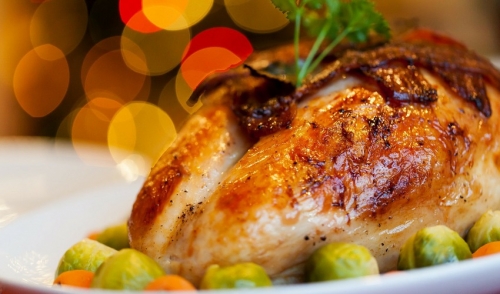{article.name}
Safe and Effective Turkey Frying Tips

- Share this:
- Share on Facebook
- Pin on Pinterest
- Tweet on Twitter
The concept of deep-frying turkey started in the south but has quickly spread in popularity throughout the country. Done right, deep-fried turkey is one of the moistest ways to serve the bird and is not at all greasy. Though the process is relatively quick and simple, there are many safety factors that should be considered before attempting to take on your first deep-fried turkey experience.
Most important ingredient: Common Sense
As with most endeavors, the basics rules of common sense apply. Make sure to fully read the instructions included with the frying kit. Deep frying a turkey has certain unique risks that you won’t encounter in most other methods of cooking the bird.
Location is key
Most importantly, fry your turkey outdoors! Every year, somebody manages to burn their house down by not following this simple rule. Avoid being that guy. Next, you’ll want to find a flat, level and sturdy surface to set up your fryer. Remember, we’re dealing with a potential fire, so don’t use a wood surface such as decking. Also, avoid finished surfaces that can be stained by spilling oil. Grass, dirt or stone surfaces work best.
Look upwards and make sure there are no overhangs or trees above your cooking area. Also, because of the risk of spreading flames due to an accident, do not choose a place near buildings or structures. As an added precaution, keep a fire extinguisher that is rated for grease fires nearby.
Prepare the bird and the fryer
You first must decide what size of turkey to use. Too big of a bird won’t properly cook. The legs will be overdone while the center of the breast may still be raw. For most fryers, 10-12lb turkeys are optimal. Next, to avoid an overflow, you must figure how much oil will be suited to the size of bird you’ve chosen. Be aware that when the turkey is later placed in the hot oil, that there will be some bubbling. Consider this when measuring for oil and allow enough clearance between the surface of the oil and the top of the fryer. The easiest method for measuring is to place the turkey in the fryer and pour water until the bird is submerged at least 2 inches. Pull out the turkey and measure the depth of the water with a clean ruler. Drain out the water and completely dry the unit. Add your oil to the same depth that the water had been.
It is important to avoid getting water or ice into the hot oil. This will at the least, cause spattering and at worst, cause a boilover. That is when the added water is flashed instantly into steam and the result is having the hot oil sent in all directions. For that reason, it is extremely important to thaw the turkey completely before cooking. Also it is recommended to dry the bird inside and out. Good quality, absorbent paper towels work well for this. Be sure to remove the neck and giblets from the two body cavities, as well as the pop-up timer if applicable.
Now you’re cooking
Once the bird is thawed and dried, preheat the oil. A temperature of 325-350 degrees is most suitable. Make sure to wear long sleeves and either quality oven mitts or leather work gloves. It’s also a good idea to have a pair of long metal tongs on standby. As an added precaution, before putting the bird in the fryer, turn off the burner. In the event of a boilover, this will prevent the oil from igniting. Next, slowly lower the bird into the preheated oil, legs up. Once the bird is in the oil, turn the burner back on.
To reduce the need to keep checking the bird for doneness, simply figure three and a half minutes per pound of turkey. When the time comes to check your turkey, remember to lower it slowly back into the oil.
Other safety tips
- Never leave the hot fryer un-attended and ensure that for the time being, no children or pets can get near the fryer.
- Don’t stuff the turkey.
- Don’t dispose of or store the oil until it has cooled completely.
- Wash your hands thoroughly and use other standard practices for handling raw poultry.

Comments